![]()
![]()
![]()
Use LEFT and RIGHT arrow keys to navigate between flashcards;
Use UP and DOWN arrow keys to flip the card;
H to show hint;
A reads text to speech;
24 Cards in this Set
- Front
- Back
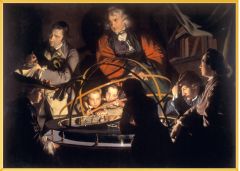
|
Wright
Enlightenment 17863-1765 illustrates Deism uses tenebrism to dramatize science |
|
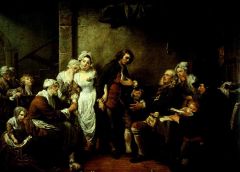
|
The Village Bride
Greuze Enlightenment 1761 narrative content sentimental moment moralizing purpose |
|
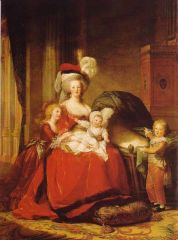
|
Marie Antoinette and her Children
Vigee-LeBrun Enlightenment 1788 intended as propaganda shows Marie Antoinette in role as grieving mother alludes to allegory of Abundance |
|
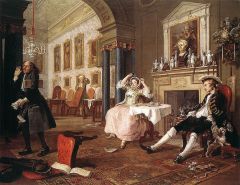
|
Breakfast Scene from Marriage a la Mode
Hogarth Enlightenment 1745 satirical critique of society marriage between nobleman's son and tradesman's daughter shows unfaithful wife and dissipated husband |
|
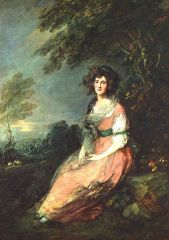
|
Mrs. Richard Brinsley Sheridan
Gainsborough Enlightenment 1787 depicts her as liberal, unbound hair, no corset, wild background |
|

|
Portrait of Paul Revere
Copley Colonial 1768-1770 Craftsman as Radical emphasizes vocation, shown at work shows pensive nature and skill at silversmithing virtuoso technique |
|

|
The Death of General Wolfe
Benjamin West Colonial 1771 commemorates Battle of Quebec City in French and Indian Wars The British won, but Wolfe found out just before he died Neoclassical in terms of history painting, but Romantic in color, emotion, storm West co-founder of British Royal Academy |
|
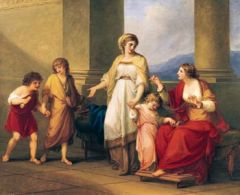
|
Cornelia Presenting Her Children
Angelica Kauffman Neoclassical 1785 introduced to Classicism when she moved to Rome from Switzerland at age 22 unusual in that she focused on history paintings, not portraiture as most women did paintings are moralistic and didactic portrays Cornelia as the good mother whose sons grow up to be political reformers |
|
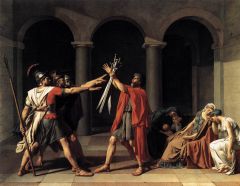
|
Oath of Horatii
David 1784 Neoclassical theme of loyalty to the state above loyalty to family sets standard for Neoclassical history painting technique=clear brushstrokes, primary colors, precise lines |
|
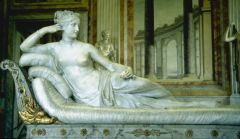
|
Pauline Borghese as Venus
Canova Neoclassical 1808 Canova was an Italian sculptor who moved to France at Napoleon's behest Canova desired to show her as Diana, she insisted on Venus Pauline infamously unfaithful, husband hid the sculpture combines classical elements (drapery, pose) with naturalism (careful rendering of details) |
|
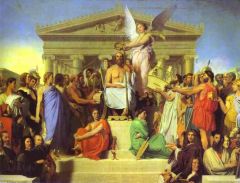
|
Apotheosis of Homer
Ingres Neoclassical 1827 typical academic work: large canvas, precise brushstrokes, historical subject features Homer surrounded by other poets and artists his two poems are described as allegorical young women at his feet sets technique and style of Academy art for the next hundred years |
|
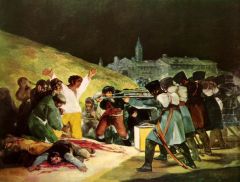
|
The Third of May
Goya Romantic 1814 liberals like goya thought that France would bring democracy and reform, not oppression guerilla attacks and uprisings resulted indiscriminate massacres as reprisals by French dehumanized, faceless soldiers, and Christ victim |
|
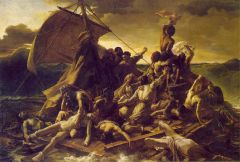
|
The Raft of the Medusa
Gericault Romantic 1818-1819 Depicts the outcome of the errors of a political appointee pyramidal structure artist fascinated by the psychological implications for the survivors close study of dea bodies and parts lends veracity strong diagonals, and the raft juts into viewers space Romantic because of themes, the critique of a corrupt government and the irrepressible nature of man |
|
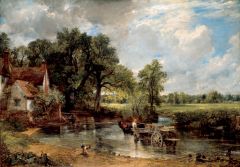
|
The Haywain
Constable Romantic 1821 nostalgic view of the pastoral, rural life sky and clouds impressive first true landscape other than Dutch Realist |
|

|
Death of Sardanapalus
Delacroix Romantic 1826 inspired by Byron poem king destroying beloved possessions as an army enters his city before suicide shocking originally, melodramatic, vivid colors and chaos |
|
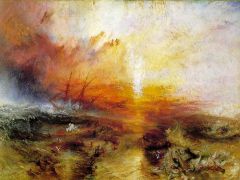
|
The Slave Ship
Turner Romantic 1840 commemorates event in the past, dying slaves thrown overboard for insurance money dramatic through use of color, evokes emotion and disturbs viewers |
|

|
The Oxbow
Cole Romantic 1836 Hudson River School did series on rise and fall of empire, metaphorically shows the benefits of civilization on the right manifest destiny |
|
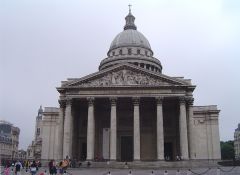
|
The Pantheon (Sainte Genevieve)
Paris, France Soufflot Neoclassical 1755-1792 initially commissioned as Catholic Church, repurposed in Revolution classical idiom, excellent Roman Columns, dome rests on two drums, Roman and Greek Elements engineering is essentially Gothic (very light) |
|
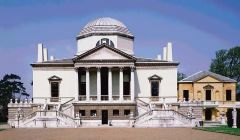
|
Chiswick House
Boyle & Kent Neoclassical begun 1725 modeled on the Villa Rotonda not same on all sides begins trend of Palladian, Neoclassical country homes in England |
|

|
Monticello
Thomas Jefferson Neoclassical 1770-1806 Palladian design, inspired by Villa Rotonda Jefferson also designed Virginia State Capitol and Rotunda of the University of Virginia |
|
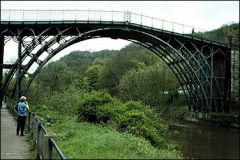
|
Iron Bridge
Coalbrookedale, Negland Darby & Pritchard Enlightenment beginning of use of iron and steel as building material scared people at first as they were not used to such airy designs |
|

|
Houses of Parliament
Barry and Pugin Romantic 1835 Revivalist Architecture Gothic frosting on Renaissance body, recalling past glories of England Sometimes style is called Neo-Gothic, we will call it Romantic |
|
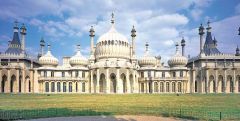
|
Royal Pavilion
Brighton Nash Romantic 1815-1818 Romantic Impulse, Taj Mahal inspired pretend Indian Palace, chinoiserie inside built by Prince Regent so he could visit his mistress |
|
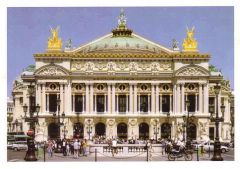
|
Paris Opera (Opera Garnier)
Paris, France Garnier Late Romantic 1861-1874 recalls Baroque, apex of power under Louis XIV designed to accommodate social functions, 2/3 of building was the foyer |

